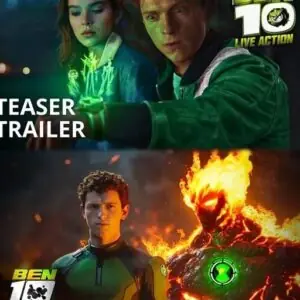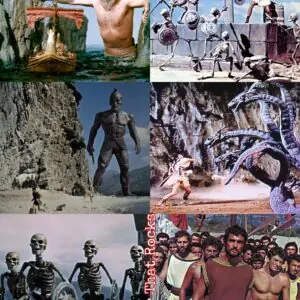Survival in the Freeze: Breaking Down the Plot of Centigrade (2020)
Centigrade (2020), directed by Brendan Walsh, is a compact, claustrophobic survival thriller set almost entirely inside a car buried in snow. Based on true events, the movie explores the physical and emotional toll of survival when a couple is trapped inside their vehicle during a brutal snowstorm in Norway. With just two main characters, no flashbacks, and limited space, the story relies heavily on tension, character dynamics, and the creeping dread of time running out. Here’s a breakdown of the plot.

The Setup
The film opens with Matthew and Naomi, an American couple, waking up in their parked SUV somewhere in the Norwegian wilderness. They had pulled over the previous night during a snowstorm while traveling to promote Naomi’s new book. To avoid driving in dangerous conditions, they decided to sleep in the car.
When they wake, they find themselves completely snowed in. Snow has buried the car up to and over the windows. They are sealed in. There’s no phone signal. The battery won’t start. And to make matters worse, Naomi is eight months pregnant.
Day One: Shock and Denial
At first, the couple believes that rescue is a matter of time. They ration a few snacks from the glove box and rely on bottled water. Matthew assumes plows will come by the road soon. Naomi wants to conserve energy and stay put. There’s some initial disagreement, but both are still calm, confident they’ll be found within a day or two.
As hours pass, the situation grows more frustrating. They scrape snow off the windows hoping for light or a signal. They try starting the engine for heat but the battery’s dead. The temperature drops. Tensions begin to rise—not just due to the cold, but due to their conflicting views on how to handle the situation.
The Middle: Cold, Hunger, Conflict
As days turn into a week, panic sets in. The car grows colder. They run out of food quickly. Naomi, carrying a baby, begins to suffer from malnutrition. Her water intake is controlled, but the stress of being trapped—combined with her physical vulnerability—makes her increasingly fragile. Meanwhile, Matthew tries to be proactive. He considers digging out, even breaking a window, but the freezing temperatures make that plan dangerous.
A key element in this phase of the story is the psychological tension between the couple. Confined in close quarters, their relationship begins to unravel. Old resentments surface. Naomi accuses Matthew of being reckless. Matthew feels helpless and angry. They love each other, but fear and frustration put their bond to the test. There’s no escape, no distraction—just survival and raw emotion.
Matthew eventually tries to dig his way out through the passenger-side door. He manages to force it open but quickly discovers that the snow outside is too thick and heavy to make meaningful progress. Worse, the cold nearly kills him. He returns frostbitten, shivering, defeated.

The Baby Arrives
Eventually, Naomi’s contractions begin. In one of the film’s most intense and emotional scenes, she gives birth in the car. There’s no doctor, no warmth, no help—just the two of them. The scene is both horrifying and deeply human, capturing the strength of Naomi as she fights through pain, fear, and the cold to deliver her child.
They wrap the baby in clothing and do their best to keep it warm. The presence of their newborn changes the stakes. Now, it’s not just about them—it’s about the life they brought into the world. It gives them a renewed sense of purpose but also increases the pressure. They have to get out.
The Breaking Point
Matthew, determined to save his family, makes another attempt to escape. This time, he prepares more thoroughly. He wraps himself in layers and packs snow into bottles for water. He writes a note to Naomi and the baby in case he doesn’t make it.
He climbs out through a broken window and disappears into the white void.
Time passes. Naomi, alone with the baby, waits and prays. Days go by. She starts to think he’s dead. Her body is weakening. She talks to the baby, trying to stay mentally grounded. The silence is suffocating. The isolation nearly breaks her.
Then one day, she hears something.
The Resolution
A rescue team finds her. Matthew did make it out. He reached a road and managed to alert authorities. Naomi and the baby are pulled from the car—emaciated, frostbitten, but alive. They’re rushed to a hospital. We don’t see a grand reunion or overly sentimental ending. The movie ends with a brief flash of light—relief after darkness, hope after isolation.
The final shot is quiet, reflective. It doesn’t shout triumph. It simply shows that they endured.
Themes and Impact
Centigrade isn’t about action or dramatic rescues. It’s about endurance, about what happens when survival comes down to the human will and the strength of relationships. The film explores:
- The physical reality of being trapped: Unlike many survival movies that rely on external threats (wolves, avalanches, etc.), Centigrade shows how time, cold, and confinement alone can break you down.
- Psychological toll: The movie focuses deeply on the emotional unraveling of its characters. The claustrophobia isn’t just physical—it’s emotional. There’s no music score manipulating your feelings. The silence becomes its own kind of antagonist.
- Parenthood under pressure: Naomi’s pregnancy and eventual birth add a unique and intense layer to the survival theme. It’s rare to see a survival movie handle childbirth with such grit and realism.
- Minimalism in storytelling: With essentially two characters, one setting, and no major action scenes, the film relies on strong performances and a creeping sense of dread. Genesis Rodriguez and Vincent Piazza carry the movie with raw, believable performances.
Final Thoughts
Centigrade is not a fast-paced thriller. It’s a slow burn—literally and figuratively. It captures the horror of being powerless against nature, the fragility of human bodies in the cold, and the mental strain of isolation. But it also shows the resilience of love and the human instinct to survive, even when there’s no clear way out.
The movie stands out because of its simplicity. It doesn’t add unnecessary subplots or distractions. It just puts you in that car, buries you in snow, and asks: what would you do?





